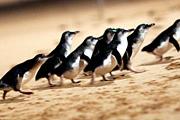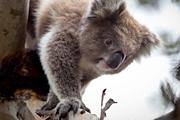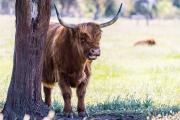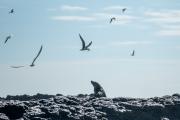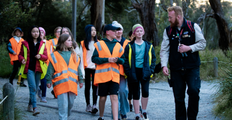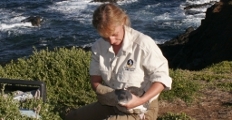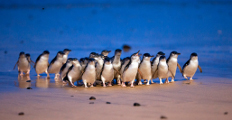Motorists urged to take care to protect Phillip Island’s smallest endangered residents
Motorists urged to take care to protect Phillip Island’s smallest endangered residents
The growth of the Eastern barred bandicoot population on Phillip Island has led to an increase in the endangered marsupials being hit and killed by cars, with rangers warning motorists to take care when driving on roads near wildlife habitat.
Phillip Island Nature Parks has seen evidence, and had reports from concerned residents, of Eastern barred bandicoots killed in areas such as Ventnor Beach Road, Back Beach Road around Kitty Miller Bay, Ventnor Road near Summerland Peninsula, Berry’s Beach Road near Ventnor Beach Road and in Newhaven around Phillip Island Road.
Since their release on Summerland Peninsula in 2017, the species is gradually spreading across the island with populations now becoming more visible on the Summerland Peninsula, Newhaven, Ventnor and Cape Woolamai. Researchers estimate bandicoot numbers to now be establishing well across the island, but can’t say for certain as it’s not possible to track every animal.
In 2021, in a first for an Australian species, the mainland Eastern barred bandicoot was reclassified from ‘extinct in the wild’ to ‘endangered’.
Nature Parks Conservation Manager Jessica McKelson said:
“Phillip Island is a nature haven for bandicoots, where we are so fortunate to live with this species that just escaped extinction on the mainland. It is everyone’s responsibility to help protect and live responsibly with our precious wildlife, and we can do this by being responsible pet owners and slowing down on roads for these little marsupials.”
Eastern barred bandicoots are ecosystem engineers for our environment and have positive impacts such as reducing soil compaction, and improved nutrient and water infiltration.
“Eastern barred bandicoots are small, about the size of a guinea pig, and weigh less than a kilogram. They are also nocturnal, so they are most active in the evening and at night,” Ms McKelson said.
“While they have been seen foraging along the sides of the road, like most animals, they are simply using the roads to cross, and unlike a wallaby, they are harder to see, but are clearly visible in the headlights.”
The Eastern barred bandicoot has distinctive white stripes across its rump and a small white tail. It is sometimes mistaken for a rabbit from afar.
Ms McKelson urged motorists to take their time when driving on Phillip Island’s roads, especially at dawn, dusk and at night when more animals are active.
“To help spot Eastern barred bandicoots on the road as you drive, look for movement and eye-shine,
both on the road and on the verges where they may be foraging, and reduce your speed to suit the
conditions.” she said.
If you do hit an Eastern barred bandicoot, or any wildlife, please stop to check the animal if safe to do so, or you can call Wildlife Victoria on (03) 8400 7300 for support.
If you see an Eastern barred bandicoot on Phillip Island, please help us by recording your sighting here.





